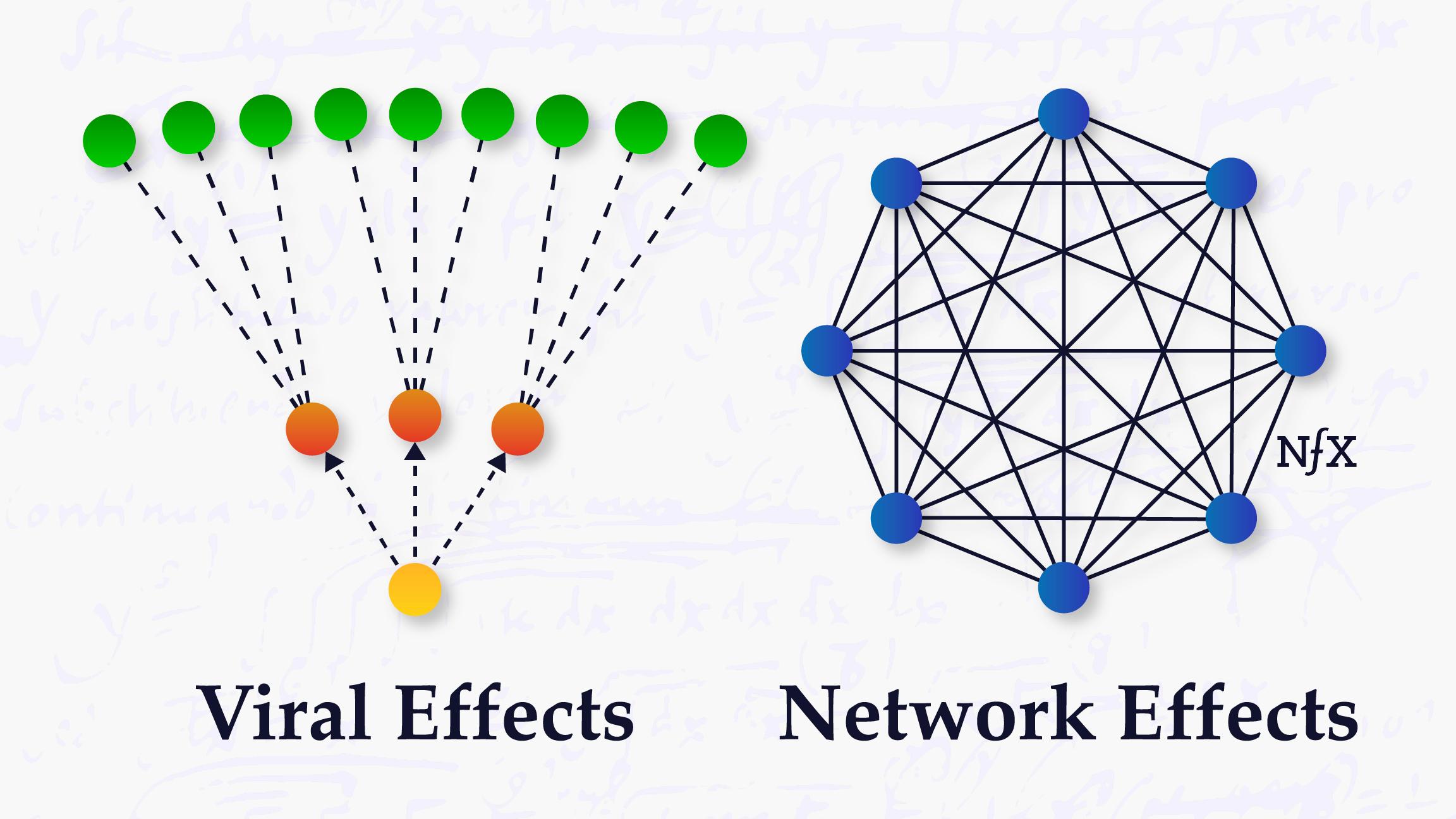

Virality and network effects are conflated by even experienced Founders, and it keeps them from having the right strategies and developing world-class products.
Viral effects and network effects are two completely different things.
Viral effects are about growth of new users. Viral effects are when you get your existing customers to get you more new customers, ideally for free.
Network effects are about adding value and defensibility to your product. A network effect is when every customer of your product adds incremental value to all the other customers of your product so that it becomes difficult for customers to find any alternative product which gives them as much value.
Viral effects can exist without network effects, and network effects can exist without viral effects.
Further, there are very different playbooks and mental models for building virality vs network effects. Not understanding the distinctions will be detrimental to your company’s long term success.
The name of our firm, NFX, stands for network effects. That’s how important we think network effects are for value creation. Sure, as Founders ourselves, we created *viral* effects in over ten companies that went viral enough to attract 10+ million users, including one over 150 million and another over 1 billion. We deeply understand the inner workings of building virality.
Yet at the same time, we learned how much less important viral effects are to long-term value creation than defensibilies like network effects.
While viral effects are a useful attribute of products to reduce the expense of acquiring new users, network effects remain the key driver of value creation for startups in the digital age by keeping people using them.
Both are hard to create. There are no longer as many products that go viral as there were in the so-called Golden Age of Virality, 2000 – 2012. And products with true network effects are also rare and take care and feeding over time to keep their network effects.
Part of the confusion between the two comes from the fact that many iconic network effect companies in recent history like Facebook, Twitter, TikTok, and WhatsApp also happened to experience rapid viral growth. But because virality and network effects coincided with these high-profile cases, they are falsely perceived as two sides of the same coin.
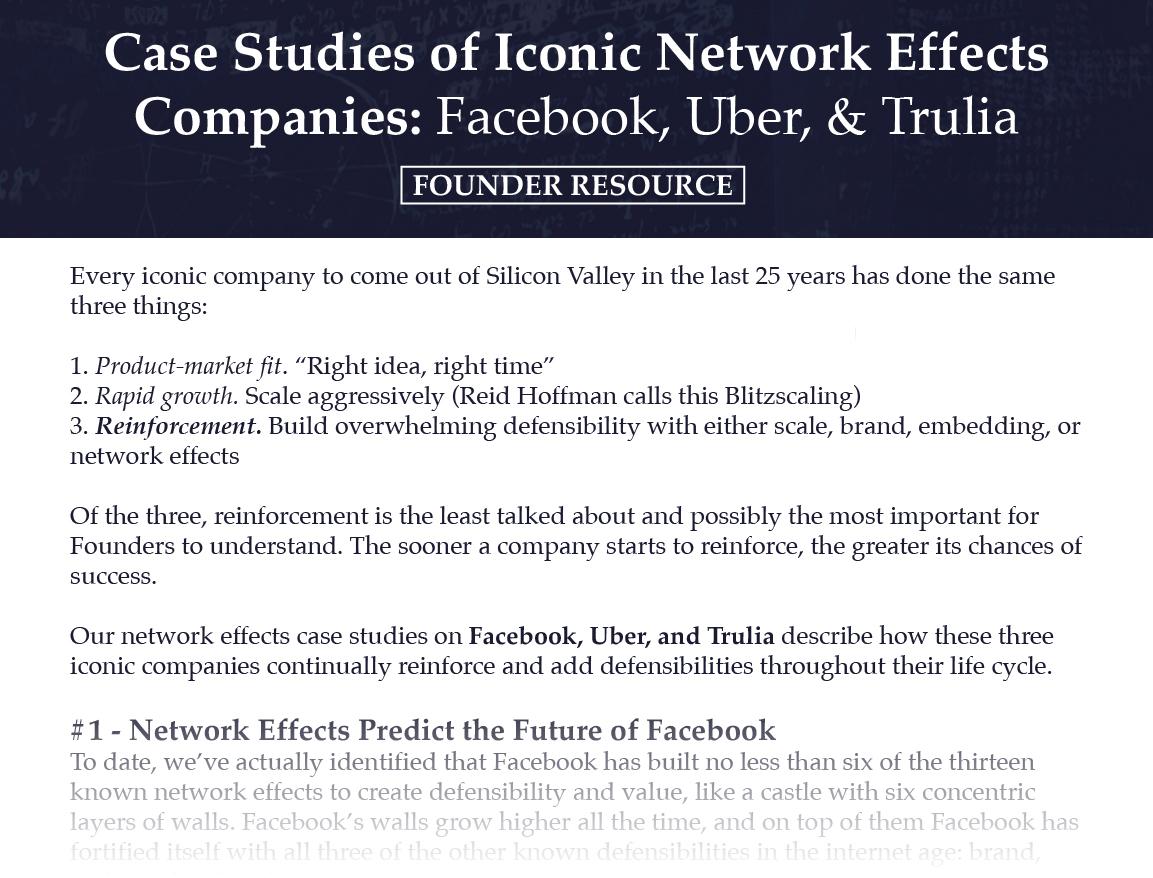

How To Think About Building Virality Into Products
To develop great virality you must be focused on language. Language is the rails on which products are shared, so you must play with language, experiment with it, and build the product around the language.
You want to get a user to feel the emotional content of your product. What’s their emotional or psychological payload? What will the user feel about themselves when they share? This type of EQ thinking, combined with the analytical/mathematical skills to keep iterating, are rare skills to find in one person. That’s why the viral growth people are legends. If you don’t have that combination, find someone who does, and stay close to them.
Another unique thing about virality is that it comes and goes over time depending on the channels available. These viral channels are constantly in flux. Not true with network effects, which are more stable over time. Which viral playbooks are most effective depends upon the era you’re operating in.
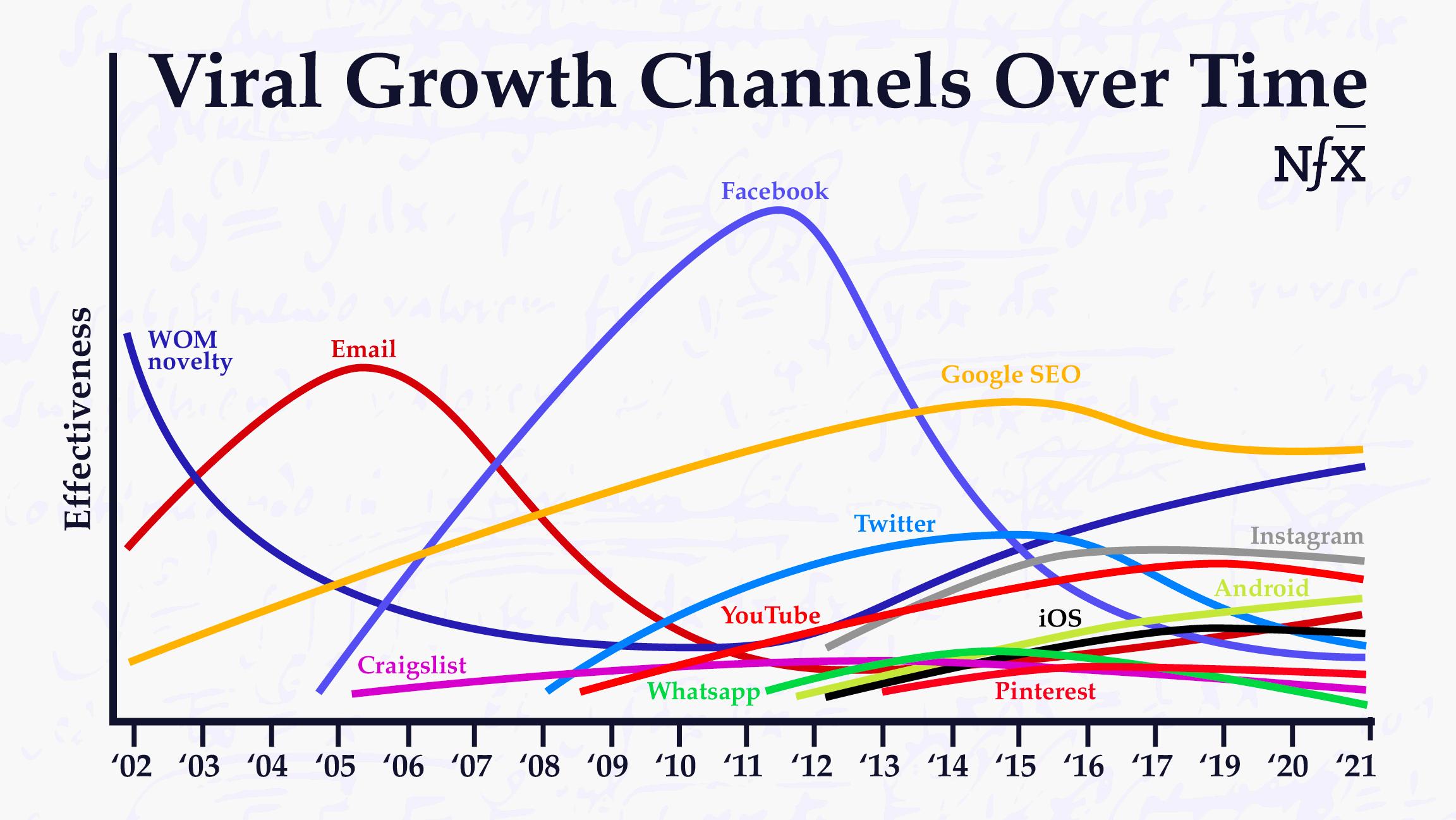

We’ve identified ten different playbooks for creating viral products. We’ll cover them in greater detail in future essays, but here’s a quick look at six of them.
- Novelty/Entertainment: the product stands out because of its novelty. It makes people say “you have to come check this out” — whether because it’s funny (BuzzFeed), anger-inducing (NowThis), Inspiring (Upworthy), or creates unparalleled value (Zoom). There are many reasons why people share and we’ll cover those in a different essay.
- Instrumented: you design the product to acquire virality and tune it iteratively using A/B testing and data to increase the K-factor. The legendary viral loops.
- Blind instrumented: a version of instrumented virality when you can’t see the full picture of the behavior of viral message recipients after they receive the viral message, such as when trying to get products viral on Android/ iOS.
- Incentivized: Incentivizing users to share the product with their friends using rewards like more product access (Dropbox), free services (Uber), or money (PayPal).
- Link-planting: Getting your users to put referral links to your product on publicly visible profiles, such as their Twitter bio or Facebook profile.
- Celebrity: The idea is that if your product can get featured by the right celebrities, it will go viral. This isn’t typically true, but it’s a viral strategy people pursue.
How to Think About Building Network Effects Into Products
Network effects are a topic we’ve covered extensively. Here are just some of those essays:
- Defensibility Adds the Most Value For Founders
- The Network Effects Manual
- The Network Effects Bible
- Reinforcement: The Hidden Key to Building Iconic Tech Companies
- The 14th Network Effect: Expertise
The thinking behind building network effects is less about emotion and more about the math for customers around getting value — utility. Giving the customer more value out of your product by getting your other customers to put value in it. Customers are not even usually aware that they are doing mental math around the value they are getting from network effects businesses — but they are. “What do I give for what I get?” When that math makes sense, they will never leave. Retention builds defensibility.
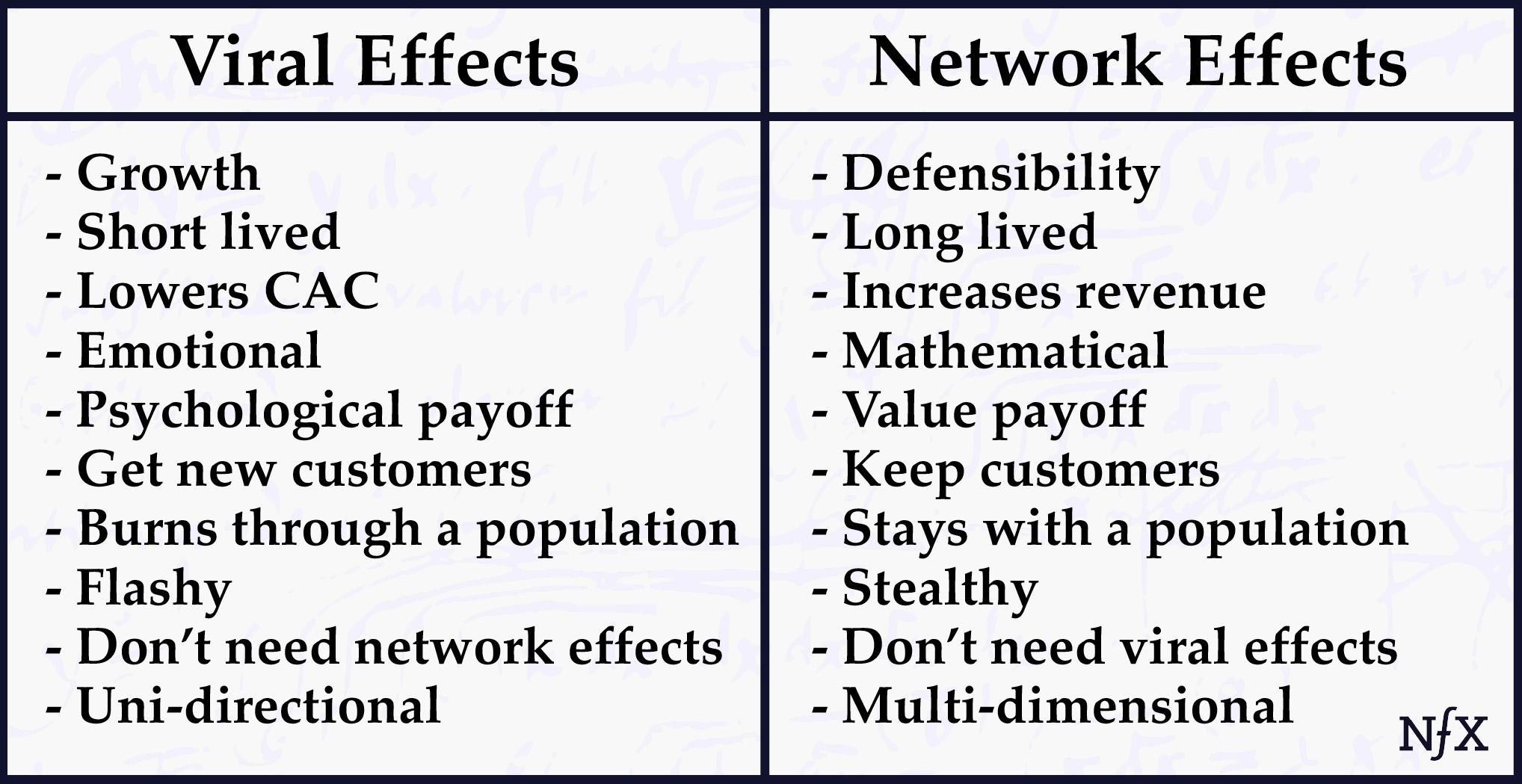

Viral success without network effects or some other defensibility is often flashy but short-lived.
The list of viral companies that failed to produce valuable companies is long. Going viral didn’t make JibJab, PhotoBooth, FormSpring, BuzzFeed, or the Sequoia-backed QuizUp (which raised $27M and died) nearly as defensible or valuable. They didn’t have network effects.
The opposite is also true. Products with network effects don’t necessarily have viral effects. A B2B marketplace, such as NFX portfolio companies like Moov or Incredible Health, could easily use paid advertising to attract buyers and sellers and build a 2-sided marketplace network effect with little virality.
Or, you could pay a city to deploy a thousand IoT devices or other physical nodes across a city that creates a mesh network whose performance — due to the network density — is so much better than any others that no competitor could hope to compete until they also deploy a thousand nodes to their own mesh network.
Understanding the difference in network effects and viral effects is important for getting your playbooks right, especially considering how often people mix them up. Make sure that isn’t you.
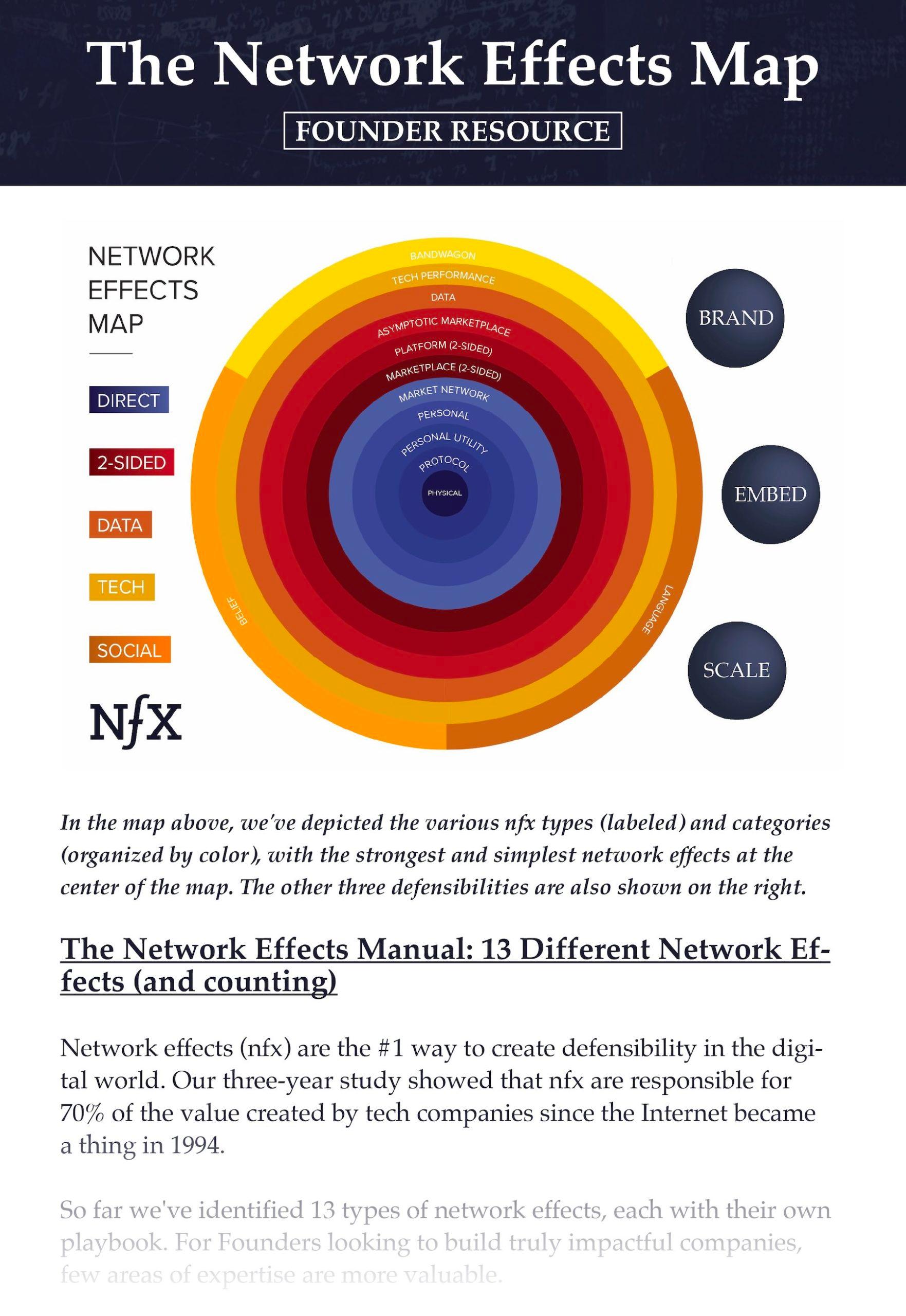

The Relationship Between Viral Effects and Network Effects
As mentioned earlier, a lot of the confusion between network effects and virality stem from high-profile examples like Facebook, which exhibit both properties.
There’s also a strong complementary relationship between virality and network effects.
For products seeking virality, also having a network effects approach to the product is useful because it makes it easier to create viral language hooks using words like “share”, “get”, and “see” that aren’t as easy to build into non-network effects products.
For products seeking network effects, having virality means that you can add new users faster to build your network effect and hit critical mass faster than your competitors. You don’t need virality to do this, as you can pay to acquire users, but virality helps you achieve network effects by growing the network more quickly. Sometimes explosively. Note Zoom in April 2020.
So there can be a symbiotic relationship between network effects and virality if you design the product correctly. Some other reasons that network effects and virality are easy to confuse:
- Viral effects and nfx are both nonlinear processes.
- They both lead to positive feedback loops. More users leads to more value or more users, respectively.
- Network effects create value for your users while you sleep, and virality creates more new users as you sleep.
- Increased value from new users due to network effects can increase virality by causing word-of-mouth.
- They are both rare and difficult to engineer.
- They are both mostly found in tech companies built for a networked age.
- The pioneers of viral marketing and network effect business models both came from Silicon Valley, and this is no coincidence. The same global online network that enables viral loops to reach huge populations is the same driving force behind networked products with userbases of unprecedented scale.
The Future of Virality and Network Effects
With viral effects there are seasons to it, depending on the channels and technologies you have available. Going viral today is more difficult than it was during the 2000-2012 Golden Age because most platforms have become saturated with the same viral strategies that worked early on.
Virality has therefore largely returned to where it was before the rise of the internet: things simply need to be novel. That means, as mentioned above, they need to be immensely high quality, shocking, or deliver 10x value to go viral, typically through regular-old word of mouth.
Network effects, on the other hand, never go out of style. They’ve been important for the last 30 years and will continue to be for the next 100. Network effects matter irrespective of the time in which you live. They describe the underlying force of wealth creation in a networked economy.
So if you have to choose between viral effects and network effects, choose network effects.


As Founders ourselves, we respect your time. That’s why we built BriefLink, a new software tool that minimizes the upfront time of getting the VC meeting. Simply tell us about your company in 9 easy questions, and you’ll hear from us if it’s a fit.
